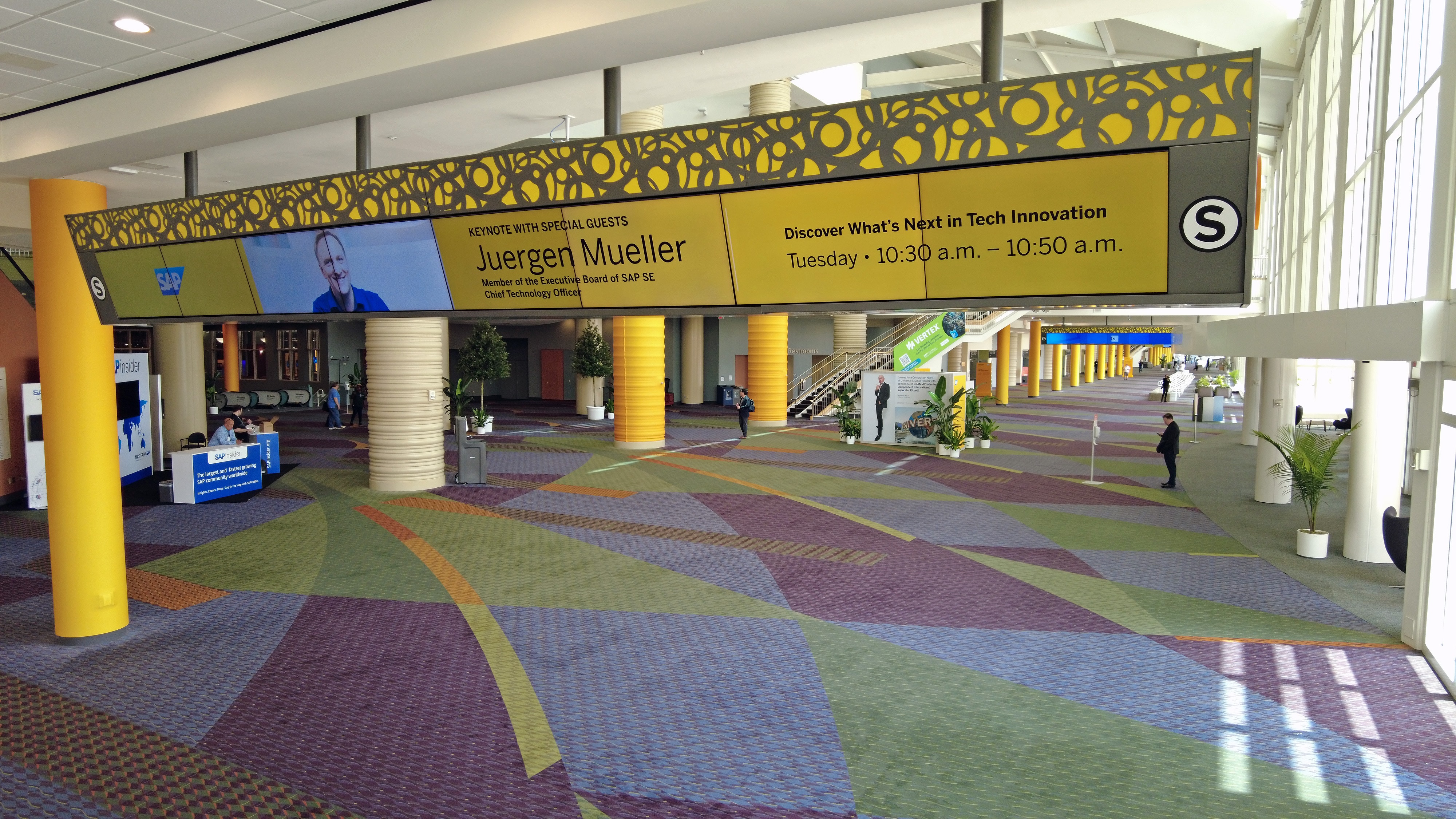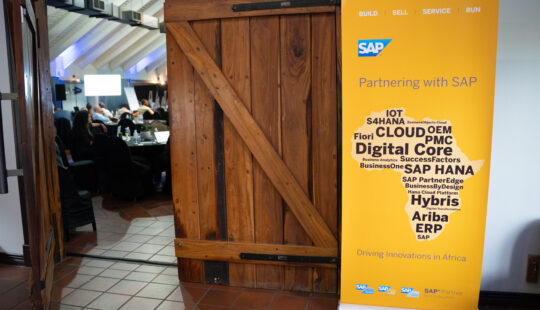SAP CEO Christian Klein and CTO Juergen Mueller gave ARTHUR GOLDSTUCK deep insights into the future of enterprise technology during last week’s Sapphire conference in the USA
Last week, three of the world’s biggest technology organisations unveiled their visions for a future of business that will see a revolution in efficiency.
SAP, the German company that leads the world in enterprise resource planning (ERP) software, search giant Google, and chipmaker Intel, all hosted major international events where they launched new products and services, and provided a glimpse of the future of business.
SAP in particular, at its annual Sapphire event in Orlando, Florida, signalled an acceleration of efforts to bring greater intelligence to the systems that run organisations’ operations.
Google’s annual I/O developer conference was heavy on new consumer gadgetry, in particular plans to launch a Pixel smartwatch later this year. However, it also introduced artificial intelligence (AI) productivity tools that will, among other, provide instant summaries of long documents. Meanwhile, Intel unveiled a new generation of computer processors that will reduce the time it takes to train large-scale AI models.
But it was SAP that provided the clearest picture of how businesses are likely to operate in the near future. And one word stood out: efficiency. We asked chief technology officer Juergen Mueller to look into his crystal ball.
Before that, however, during a keynote address at Sapphire, SAP CEO Christian Klein said that the company planned to draw on data about best practices from more than 40,000 customers. It would leverage Signavio, an enterprise business process intelligence platform it acquired last year, which helps companies transform and manage their business processes at scale.
This, he said, would allow business and IT leaders to discover new growth opportunities and launch new business models, as well as uncovering inefficiencies in internal processes. This would lead to a revolution in business efficiency.
Later, he told Gadget: “When you think back 50 years, there’s so much knowledge inside SAP and in our ecosystem, we implemented and designed so many business processes, now we really have our finger on the pulse of how they need to change in a digital world to create a seamless experience.
“We are collecting all of the data, the best practices, not only from SAP, but also from all our partners. That’s a big differentiator of Signavio: You don’t need to replicate data in a third-party data mining tool. You can use your data and then you can benchmark it against how these business processes look in your industry.”
SAP chief technology officer Jurgen Mueller, said in an exclusive interview that this capability would change the way businesses make decisions.
“We acquired Signavio for a reason: we saw there’s a gap in our portfolio,” he said. “It’s very important to customers to understand the business processes and we’ve modelled business processes for 35 years or so, but they were often a separate artifact, so your processes are not connected to your execution.
“Signavio gives you an X-Ray into your real processes and execution. That has to be the foundation, grounded in reality, from where you then can change, find efficiencies, find how you can do things better, how you can serve your customers faster. Companies often have a good idea where they want to go, but today this X-Ray doesn’t exist.”
Signavio, however, will allow any size company to access the kind of business intelligence that has enabled tech giants like Microsoft, Amazon, and Google to have an instant insight into their business processes. From there they have been able to implement a solution and assess its success within minutes, replacing or improving it before most customers know it existed. However, this is not possible without the ability to mine massive amounts of data on the fly – an ability previously restricted to the giants.
“We have tens of thousands and potentially hundreds of thousands of other companies that can now get such a detailed level of understanding of their processes,” says Mueller. “We learn and develop industry-specific best practices in 25 industries, and we can bring the best of what we know to customers.”
The end-result, he says, is vastly improved efficiency. However, that in itself is not a differentiator, if all companies become more efficient. Efficiency, in effect, becomes a ticket to the game.
“We see a huge difference in companies that really embrace digital technologies, and who always want to create differentiating capabilities through technology, compared to the ones that are just using technology where they have to.”
Mueller says he does not believe there is a single differentiator between the more competitive companies and those who fall behind. However, SAP has discovered a strategy that helps set companies apart: “Often you see companies really go through the end-to-end processes of their the value chain, to identify the most value-generating activities in the company – and then pick a few where you really make a difference.”
While this approach is not a secret, it has tended to evade organisations because it requires an integration of strategic planning and supplier data across the entire logistics chain. Mueller is frank about the limitations of existing technology in this regard.
“Integrated planning is something that will happen in the next three to five years. We have components of that already, but this will be something where I see a lot of innovation happening, with real impact on companies.”
- Arthur Goldstuck is editor-in-chief of Gadget. He was a media guest of SAP at the Sapphire conference in Orlando, Florida.
This article first appeared on Gadget.



